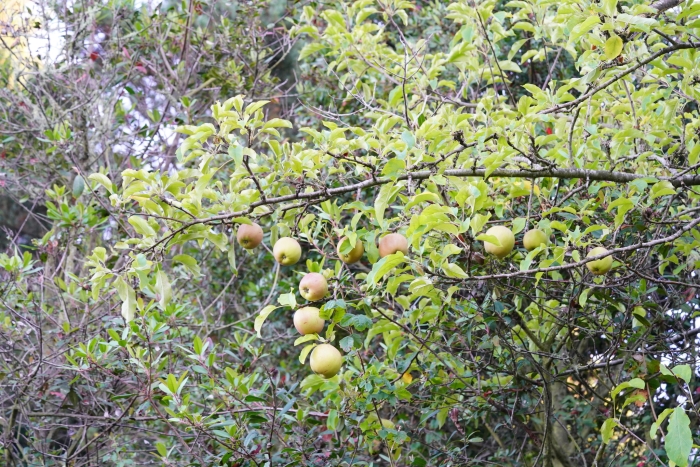European Crab Apple
(Malus sylvestris)
European Crab Apple (Malus sylvestris)
/
/

© Michael Warner
CC BY 4.0
Image By:
© Michael Warner
Recorded By:
Copyright:
CC BY 4.0
Copyright Notice:
Photo by: © Michael Warner | License Type: CC BY 4.0 | License URL: http://creativecommons.org/licenses/by/4.0/ | Uploader: ouzel | Publisher: iNaturalist |
























Estimated Native Range
Summary
Malus sylvestris, commonly known as European Crab Apple, is a deciduous tree that is native to Europe and Western Asia, and thrives in habitats including hedgerows, woodland edges, and traditional orchards. It typically grows to a height of 15-25 feet (4.5-7.6 meters) and has a broad, often irregular crown. The European Crab Apple is valued for its spring display of fragrant white or pinkish flowers, which bloom in late April to May, and its small, yellow-green to red apples, approximately 1 inch in diameter, that mature in the fall. The fruits are sour but edible and are commonly used in jellies, jams, and ciders.
The European Crab Apple is appreciated for its ornamental qualities, including its attractive blossoms and fruit, which provide visual interest and support biodiversity by attracting pollinators and providing food for birds and mammals. It is often used in mixed wildlife hedges or as a genetic resource in apple breeding programs. This tree prefers well-drained, loamy soils but is adaptable to a range of soil types. It requires full sun to part shade and moderate watering. While generally robust, it can be susceptible to apple scab and other common apple diseases. It is not typically invasive but can hybridize with domestic apple varieties, potentially affecting the genetics of wild populations.CC BY-SA 4.0
The European Crab Apple is appreciated for its ornamental qualities, including its attractive blossoms and fruit, which provide visual interest and support biodiversity by attracting pollinators and providing food for birds and mammals. It is often used in mixed wildlife hedges or as a genetic resource in apple breeding programs. This tree prefers well-drained, loamy soils but is adaptable to a range of soil types. It requires full sun to part shade and moderate watering. While generally robust, it can be susceptible to apple scab and other common apple diseases. It is not typically invasive but can hybridize with domestic apple varieties, potentially affecting the genetics of wild populations.CC BY-SA 4.0
Plant Description
- Plant Type: Shrub, Tree
- Height: 21-33 feet
- Width: 13-26 feet
- Growth Rate: Moderate
- Flower Color: Pink, White
- Flowering Season: Spring
- Leaf Retention: Deciduous
Growth Requirements
- Sun: Full Sun, Part Shade
- Water: Medium
- Drainage: Fast, Medium, Slow
Common Uses
Bee Garden, Bird Garden, Butterfly Garden, Deer Resistant, Low Maintenance, Showy Flowers, Street Planting
Natural Habitat
Thrives in hedgerows, woodland edges, and traditional orchards
Other Names
Common Names: European Crab Apple, Forest Apple, European Wild Apple, Wild Apple
Scientific Names: , Malus sylvestris, Crataegus grata, Malus acerba, Malus acerba var. barcinonensis, Malus acerta, Malus aprilovii, Malus barcinonensis, Malus brevipedunculata, Malus bulgarica
GBIF Accepted Name: